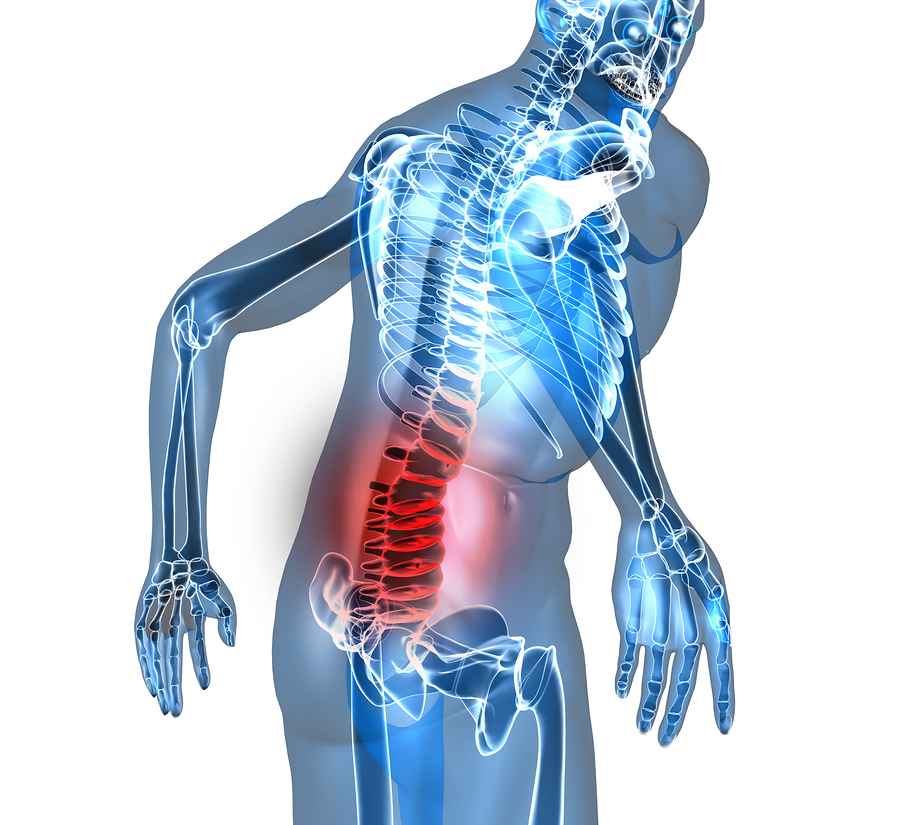A healthy lower back helps keep our bodies upright, allows us to bend, twist and move and supports most of our body weight.
Despite its importance, most of us only think about our backs when things aren't working so well. That’s when we’re in excruciating pain and even sleeping is difficult and uncomfortable. Unfortunately many of us will experience back pain at some point in our lives.
 Lower back pain can be a symptom of degenerative conditions like arthritis, osteoporosis or other bone diseases, or can be caused by viral infections or physical defects in the spine that have been present since you were born. However most cases of lower back pain are caused by overusing, straining or injuring the muscles, ligaments and discs that support the spine.
Lower back pain can be a symptom of degenerative conditions like arthritis, osteoporosis or other bone diseases, or can be caused by viral infections or physical defects in the spine that have been present since you were born. However most cases of lower back pain are caused by overusing, straining or injuring the muscles, ligaments and discs that support the spine.
This type of back pain is often triggered by playing sports or doing yard work. It can also be caused by bad posture, being jerked around in a car accident or lifting something that is too heavy. Obesity, smoking, pregnancy weight gain, stress, being out of shape and sleeping awkwardly can also contribute to lower back pain.
There are a number of things you can do to protect your back from these sorts of injuries:
- Always use your legs, not your back, when lifting heavy objects
- Sit up with your back straight and shoulders back so that you maintain the natural curve of your spine. You may want to use a back support to help you maintain good posture while you are sitting
- Support your back while sleeping by putting a pillow or a small, rolled-up towel between your knees (if you sleep on your side) or under your knees (if you sleep on your back)
- Wear flat-soled or low-heeled shoes
- Take a break and change positions every hour or so while sitting, driving or standing for prolonged periods
- Reach and maintain a healthy weight
- Work with a physical therapist to manage and help prevent lower back pain
The precautions are also important to keep in mind following an injury because once you have hurt yourself once you are more likely to do it again. In fact, 70 to 80% of people have at least one recurrence of their injury within a year.
Although lower back pain may seem like it will never end, it tends to go away within one week 60% of the time. Within six weeks 90% of people are back to normal, and up to 95% of people recover fully within 12 weeks. In general, how fast you recover depends on what you do. Studies have shown that continuing to move and go about your normal daily activities helps relieve pain and get you back to normal quicker than resting in bed. Starting a regular exercise program that combines aerobic conditioning with muscle strengthening exercises can also help your back work better and manage your pain.
Any of the physical therapists at Iron City Physical Therapy can show you the best exercises to help keep you moving after a lower back injury and speed up your recovery. They can also suggest a program that will reduce the risk of hurting yourself again by strengthening your back and deep abdominal muscles, improving your posture and keeping your body in better balance.
There are other ways that a physical therapist can help reduce your lower back pain, such as spinal manipulation or manual therapy. Some studies show that spinal manipulation provides as much or more improvement in pain and function as exercise alone. However, in practice they are routinely used together to maximize effectiveness. Call and make an appointment; the staff will be happy to answer any questions you may have about whether physical therapy is right for you.




